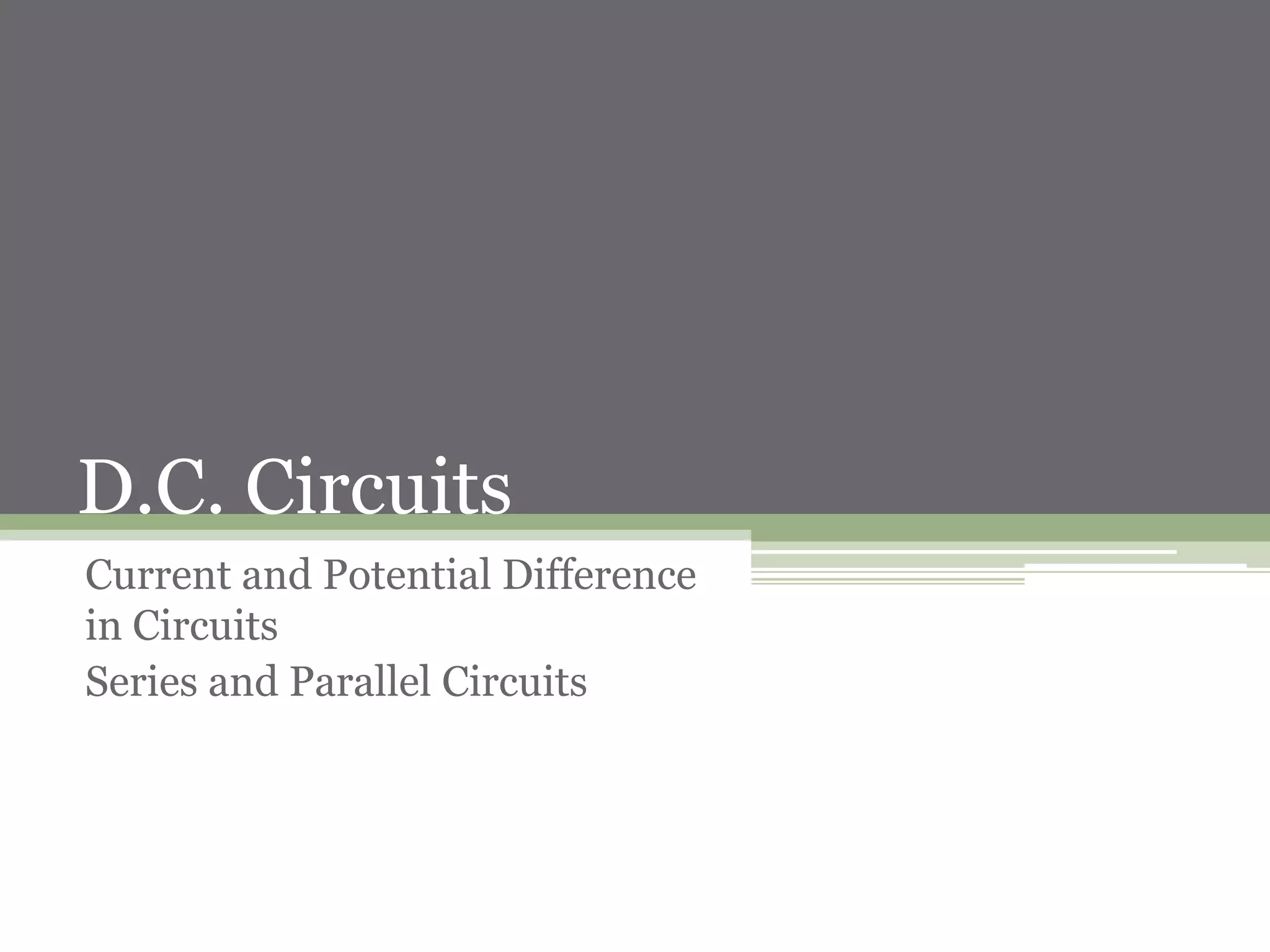This document discusses circuits, current, potential difference, and problem solving. It begins by defining an electric circuit and its key components. It then explains that in a series circuit, the current at every point is the same and the sum of the potential differences equals the total potential difference across the whole circuit. In a parallel circuit, the current from the source equals the sum of currents in the branches, and the potential differences across branches are the same. Several example problems are given to calculate current, potential difference, resistance, and other circuit properties for series and parallel circuits.





























































